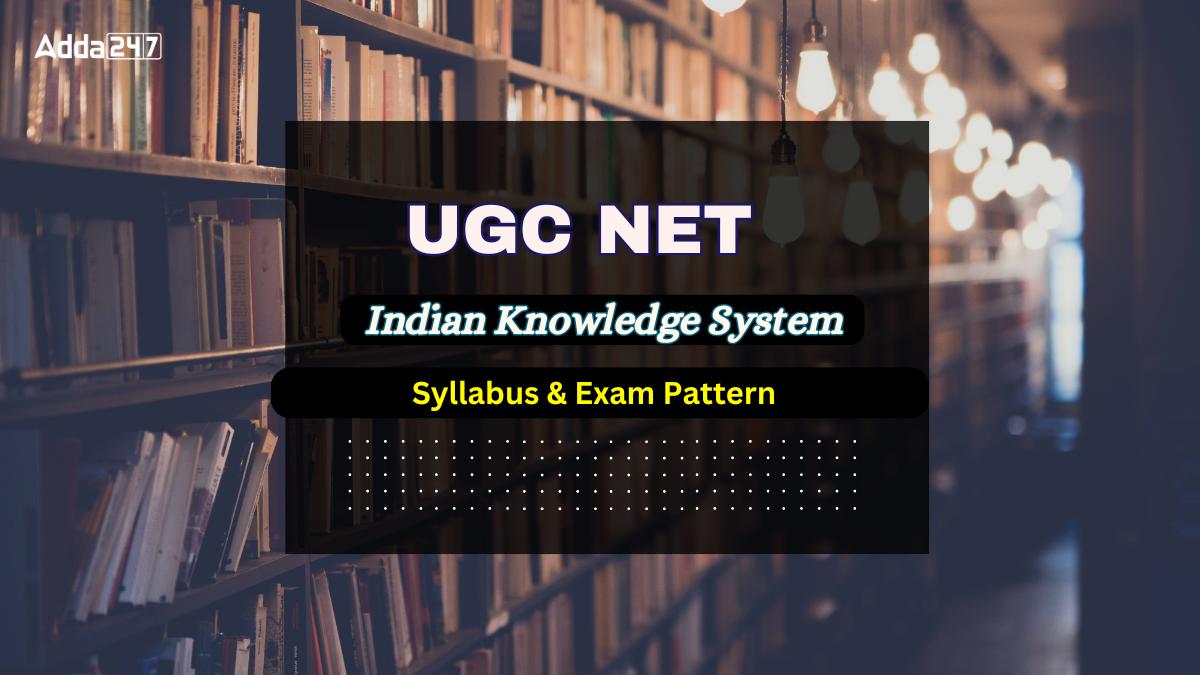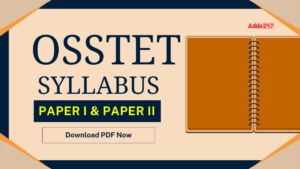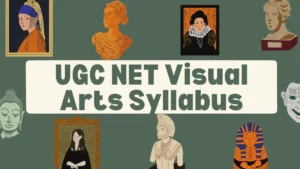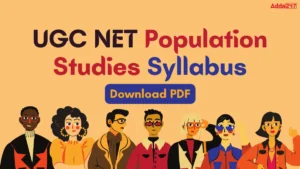Table of Contents
Candidates gearing up for the UGC NET Indian Knowledge System Exam in 2025 must delve into the intricacies of the syllabus and exam pattern outlined in this article. Understanding the comprehensive scope of the syllabus is crucial, as it encompasses various domains including Indian philosophical systems, medicine, science, mathematics, arts, and Indian and world history. By acquainting themselves with the detailed syllabus and exam patterns provided below, candidates can effectively prepare for the upcoming examination.
UGC NET Indian Knowledge System Syllabus 2025
The UGC NET Indian Knowledge System syllabus covers diverse topics such as Indian philosophical systems, astronomy, health and well-being, architecture, mathematics, chemistry and metallurgy, life sciences, agriculture, ecology, arts including dance, music, and theater, ancient Indian and world history. It explores the influence of Indian knowledge systems on various civilizations, languages, cultures, and philosophies globally, including their impact on Western thinkers and the spread of concepts like yoga and Vedic philosophy.
UGC NET Indian Knowledge System Exam Pattern
The UGC NET Indian Knowledge System syllabus and exam pattern together form a structured framework for evaluating candidates’ knowledge, analytical skills, and proficiency in the diverse domains of the Indian Knowledge System. The UGC NET examination for the Indian Knowledge System Subject follows a structured exam pattern to assess candidates’ knowledge and understanding of the subject. The exam consists of two papers: Paper I and Paper II.
- Paper I: Teaching Aptitude, Research Aptitude, Comprehension, Communication, Mathematical Reasoning and Aptitude, Logical Reasoning, Data Interpretation, Information, and Communication Technology (ICT), People, Development and Environment, Higher Education System
- Paper II: Subject-specific test focusing on the chosen discipline (Indian Knowledge System).
UGC NET Indian Knowledge System Important Topics
The important topic for the UGC NET Syllabus of the Indian Knowledge System has been explained below.
- Five general characteristics of purāṇa-s
- Indian preaching on dharma, artha, and Society
- Divisions of time inthe Veda
- Folk and tribal medicine – 8000 plants
- Indus Valley civilisation
- Geometry in Śulbasūtras
- Chemistry in the medical schools of ancient India
- Agriculture in ancient India
- Description of Navarasā
- Influence of saṃskṛta on Ancient European Languages and Their Mythologies
UGC NET Indian Knowledge System Syllabus Detailed
UGC NET Indian Knowledge System Syllabus Topic-wise has been explained below. Check the detailed topic for Indian Knowledge System – Dance, Drama, and Theatre. Unit 1-5 Syllabus will be common for all subjects. Unit 6-10 Syllabus has been explained for the Indian Knowledge System, comprising varied subjects and fields of expertise in the article below.
Unit 1: Indian Philosophical Systems – part (a)
- Caturdaśa vidyāsthāna-s: 14 branches of learning in ancient India- purāṇa, nyāya, mīmāṁsā, dharmaśāstra,
- Six vedānga-s: śikṣā, vyākaraṇa, nirukta, chanda, jyotiṣa, kalpa,
- Four Veda-s: ṛgveda, yajurveda, sāmaveda, atharvaveda
- Upaveda-s
- śāstra-s
- 18 purāṇāsa-s. Their names- Five general characteristics of purāṇa-s: sarga, pratisarga, vaṃśa, manvantara, vaṃśānucarita
- Vedāng-:s Their names, Objectives, Scientific natur,e and some details.
- Phonetics and grammar
- Scientific nature of pronunciation of saṁskr ta and other Indian languages.
Unit 2: Indian Philosophical Systems – part (b)
- Indian preaching on dharma, artha, and Society- Bhagavadgītā, Arthaśāstra, Gurukula systems, Nālandā, Takṣaśilā, Vikramaśilā, etc.
- The following topics in this unit are to be studied:
(a) Introduction to the subject
(b) Texts, author,s and their contribution - Nāstika darśana: Cārvāka, Jain,a and Bauddha darśana
- Āstika darśana: Nyāya-vaiśēṣika, Sāṁkhya and Yōga, Pūrvamīmāṁsā and Uttaramīmāṁsā (Vēdānta)
- Ancient Indian gurukula System: Nālandā, Takṣaśilā, Vikramaśilā, Valabhī, Ōdantapurī, Mithilā, Kāncī, Nādiyā, Puṣpagiri, Nāgārjunakōṁḍā, Śāradāpīṭha (Kāśmīra), Ujjain, Jagaddala aura Sōmapura
- Tarkaśāstra: Pramāṇa-s, Pratyakṣa, Anumana, Upamāna, Śabda, Arthāpatti, Anupalabdhi, Pramātā, Pramāṇa, Prameya, Pramā-svātaḥpramaṇya, Parataḥpramāṇya
- Powers of words: Abhidhā, Lakṣaṇā, Vyañjanā, Tātparya
- Cause and fallacies: Hetu-lakṣaṇa, Hetvabhāsa lakṣaṇa
- Paṃca adhikaraṇa System: Viṣaya, Saṃśaya, Pūrvapakṣa, Uttarapakṣa, Saṃgati
- Dharma, artha, and Society:
- Four puruṣārtha: Dharma, Artha, Kāma, Mokṣa
- Definitions of each of the puruṣārth-s
- Meaning of dharma: Root and derivation of the word dharma
- Definitions and meanings from various texts (Mahābhārata, Manusmṛti, Vaiśeṣika Sūtra)
- Kāmya, nitya, niṣiddha, naimittika, prāyaścita & upāsanā
- Meaning of the word artha: Puruṣārtha, Root and derivation, and meaning
- Societal outlook for tīrthayātrā, festivals, saptapurī, 12 jyotirlinga-,s and unity of India
- Bhagavadgītā: Bhagavadgītā chapter no. 16-daivī and āsurī saṃpat
- Rāmāyaṇa: Rama’s qualities noted in Vālmīki Rāmāyaṇa-maryādāpuruṣottama Rama
- Study of kaccit sarga and delineation of meaning in view of kingdom administration
- Mahābhārata: Mahābhārata as a storehouse of knowledge
- Viduranīti and its significant preaching on rāja dharma
- Arthaśāstra: Arthaśāstra, its significance, and a broad introduction to the subjects dealt with in arthaśāstra
- Cultural underpinnings of modern statecraft, such as yogakṣema (welfare measures of polity-policy), saptānga (Seven limbs of State), ṣadguṇa (Six Measures of statecraft), rāja dharma (Duty of a King), rājamanḍala (Circle of kings), and dharma (Order) mooted in the arthaśāstra
- Society and people: Ways advocated in IKS texts for the happiness and well-being of all
- Concept of svasthavṛtta
- Indian Languages and Literature: Indian Languages and their pronunciation system
- Sanskrit Language and its Relation to Indian languages: Impact of Sanskrit literature on Indian languages for literary compositions
- Literary masterpieces of Indian languages and their translations into World language,s and the names of their translators
Unit 3: Astronomy
- Measures of time:
- Divisions of time in Veda: Year, Months and days, Names of the 13 months in Taittirīya-Brāhmaṇa, The names of 12 half-months, Lunar year of 354 days
- Months and intercalary months
- General time measures, Modes of reckoning time, Lunar day, Solar day, Solar year, Lunisolar year, Civil day,
- Conversion of eras: Śaka to Kali, Śaka to Jovian years, Vikramasamvat to Kali, Kollam year to Kali
- Indian Calendrical Systems:
- Pañcāṅga:
- The five elements of the calendar
- Computations Nakṣatra, Tithi, Yoga, Karaṇa, and Vāra
- Nakṣatra of the Sun
- Solar Calendar
- Vikramasaṃvat and Śālivāhana-saṃvat – National Calendar (rāṣṭrīya dinadarśikā)
- Planetary Positions from Siddhāntik texts (Āryabhaṭīya):
- Computation of Ahargaṇa
- Revolution number of the planets in a Mahāyuga
- Finding the Mean longitude of the planets
- Mandasaṃskāra
- Śīghrasaṃskāra
- True longitudes of the planets
- Evolution of Planetary model from Āryabhaṭa to Nīlakaṇṭha (Quasi-heliocentric model)
- Various algorithms to determine ayanāṃśa
- Planetary Positions from Karaṇa and Vākya texts:
- Obtaining planetary positions in simplified algorithms given in Karaṇa texts such as Karaṇakutūhala, Grahalāghava, etc.
- Candravākyas of Vararuci and Mādhava andthe Error-Correction procedure for them
- Obtaining the longitudes of the Sun and the Moon using the Vākya system
- Importance of Māsavākyas, Saṅkrānti-vākyas and Nakṣatra-vākyas.
Unit 4: Health and Well-being
- Scope:
- Āyurvēdā
- Siddha
- Yōga
- Folk and Tribal Medical Practices
- Folk and classical streams of medical knowledge in India:
- Folk and tribal medicine – 8000 plants
- Home remedies
- Primary health care
- Bone setting
- Traditional birth attendants
- Poison healers
- Āyurveda:
- Historical development and milestones
- Personalities
- Textual sources
- Regional traditions
- Application of Pramāṇas in āyurveda for the generation and validation of medical knowledge
- Salient features:
- Nature-centric approach
- Person-centric approach
- Body-mind medicine
- Pharmacopeia of plant, animal, and mineral sources
- Multi-ingredient formulations and dosage forms
- Multipronged approach to treatment – lifestyle, diet, and medicine
- Healthy aging
- Foundational concepts of āyurveda:
- Doṣadhātumalasiddhānta
- Definition of health (svastha), daily routine (dinacaryā), seasonal routine (ṛtucaryā), good conduct (Sadvṛtta)
- Definition and classification of diseases – Ādhidaivika, Ādhyātmika, Ādhibhautika, sevenfold classification
- Scope and variety of treatments in āyurveda
- Eight clinical specialties of āyurveda
- Current status of āyurveda in India and the World
- Siddha:
- Historical development and milestones
- Personalities
- Textual sources
- Foundational concepts – Tridoṣa
- Pulse diagnosis
- Varma treatment
- Herbo-mineral formulations
- Concept of health and disease
- Preventive Medicine
- Approaches to the management of diseases
- Current status of the Siddha system of medicine in India and the world
- Yoga:
- Historical development and milestones
- Personalities
- Textual sources
- Definition of yoga
- Yoga as therapy for health and wellness
- Aṣṭāṅga yoga
- Health benefits of Āsanas
- Health benefits of Prāṇāyāma
- Health Benefits of Meditation
- Yogic methods of cleansing the body – Ṣaṭkarmas
- Application of yoga as therapy in the modern world
Unit 5: Architecture
- Indus Valley civilisation: Urban planning – Dholvira
- Hindu Temple Architecture: Elementary concepts of nagara, draviḍ, and vesarā style temples
- Brief knowledge of the Ancient and medieval structures of India:
- Buddhā and Jaina temples:
- Udayagiri
- Sāmcī
- Sāranātha
- Nālandā
- Rock and Cave temples:
- Elīphaiṃṭā
- Jāgeśvarī
- Ajaṃtā and Ellorā
- Himālayaṃ Temples:
- Kedāranātha
- Tuṃgāmaṭha
- Jāgeśvara
- Bāleśvara
- Ancient and medieval temples:
- Muṃḍeśvarī Devī temple
- Daśāvatāra Viṣṇu temple
- Ḍogaraha – Khajurāho temples
- Liṃgarāja temple, Bhubaneśvara
- Ṭerākoṭā temple, Viṣṇupura
- Temples of Bādāmī, Aihole (Cālukyāna temples)
- Kāṁcī and Mahābalīpuram temples, Cōla temples
- Sun temples: Kōṇārka, Mōḍhērā, Kaṭāramala (Almōḍā), and Mārtaṁḍa (Anaṁtanāga) (only the elementary knowledge of architecture style, period, and Deity)
- Ancient and medieval Indian Water storage and harvesting systems:
- Kallanaī dam
- Aḍalāja stepwell
- Ṭāṁkā techniques of Rajasthan
- Āhāra pāīna of Bihar
- Fundamentals of vāstu śāstra (only elementary concept)
Unit 6: Mathematics
- Geometry in Śulbasūtras:
- Expression for the surds given in the Śulbasūtra texts
- Methods for obtaining a perpendicular bisector
- Construction of perpendicular bisector: Cord-folding method, Bodhāyana method of constructing a square, The Bodhāyana-Pythagorean theorem
- Decimal place value system:
- Numbers in Veda
- Enumeration of big numbers (koti to mahaaugh, akshauhini, and other named numerals) from traditional literature
- Three different systems of numerations: Āryabhaṭan, Bhūtasaṅkhy, and Kaṭapayādi systems
- Arithmetic and Trigonometry in Āryabhaṭīya and its further development:
- Square root and cube roots
- Āryabhaṭa’s Sine-Table
- Its modification in Tantrasaṅgraha
- Mādhava series for Sine and Cosine functions
- Different methods to obtain sine values from Karaṇapaddhati
- Brahmagupta:
- Mathematics of positive, negative, and zero
- Solution of linear and quadratic equations
- Cyclic Quadrilateral
- Līlāvatī:
- Arithmetical operations: Inversion method, rule of supposition
- Solution of quadratic equations
- Mixtures, Combinations, progressions
- Plane figures: application of right triangles, Sūc problems
- Construction of a quadrilateral, cyclic quadrilaterals
- Value of π, area of a circle, surface area of a sphere, volume of a sphere
- Kuṭṭaka and continued fractions:
- Kuṭṭaka method by Āryabhaṭa and Brahmagupta
- Vallyupasaṃhāra and Continued fraction
- Vallyupasaṃhāra Method I and II from Karaṇapaddhati
- Nearest-integer continued fraction in Dṛkkaraṇa
- Kerala School:
- Mādhava series for π
- End-correction (Antyasaṃskāra)
- Different fast convergent series for π
- Putumana-Somayājī series
- Nīlakaṇṭha on the irrationality of π
- Nīlakaṇṭha and the notion of the sum of infinite geometric series
Unit 7: Chemistry and Metallurgy
- Sāṅkhya-Pātañjala system:
- Prakṛti – The original constituents and their interactions
- Conservation of energy and transformation of energy
- The doctrine of causation
- Principle of collocation, storing, and liberation of energy
- Dissipation of energy and mass and their dissolution into formless prakṛti
- The evolution of matter
- The evolution of the infra-atomic unit
- Chemical analysis and synthesis
- Elements and compounds
- Chemistry in the medical schools of ancient India:
- Physical characteristics of the Bhūtas
- The Mahābhūtās, mechanical mixtures
- Qualities of compounds
- Formation of molecular properties in chemical compounds
- Chemistry of colors
- Measures of weight and capacity
- Size of the minimum visible
- Evolution of different forms of matter (Pañcīkaraṇa) from the Vedantic view
- The atomic theory of the Buddhists and Jains
- Nyāya Vaiseśika chemical theory:
- Theory of atomic combinations
- Chemical combinations
- Mono and hetero bhautika compounds
- Theory of dynamic contact (Viśṭambha)
- Chemical action and heat
- Three axes of Vācaspati (graphical representation of the constitution of a bibhautika compound)
- Conception of molecular motion (parispanda)
- Ideas of chemistry as in br hatsaṁhitā:
- Making of vajrā lepa/vajrasamghāta
- Gaṁdhayukti
- Metallurgical heritage:
- Arthaśāstra is the earliest text describing gold, silver, and other metals
- Processing of gold, silver, copper, iron, tin, mercury, lead, and zinc as mentioned in the Indian texts in the ancient and medieval period
- Zinc distillation, as mentioned in Rasārṇava and rasaratnasamukāyā
- Concepts of acids and bases in Indian chemistry from organic fruit, vegetable-based:
- Acids
- Plant-ash-based bases
- Mineral acids of the medieval period
Unit 8: Life sciences, agriculture and ecology
- Scope:
- Kṣatriya
- Mṛgayurveda
- Pākaśāstra
- Pavitra upavana
- Kṛṣiśāstra, vṛkṣāyurveda:
- Historical development and milestones
- Personalities
- Textual sources – Upavana Vinōda, Kṛṣiparāśara, Bṛhat Samhitā, Kṛṣi Gīta
- Recreational Gardens
- Agriculture in ancient India:
- Plant diseases and their management
- Pest control
- Manures for plants
- Plant grafting techniques
- Mṛgāyurveda:
- Historical development and milestones
- Personalities
- Textual sources – Pālakāpyasaṃhitā, Gajāyurveda, Śālihotrasaṃhitā, Aśvāyurveda, Mṛgapakṣiśāstra
- Classification and description of animals
- Diagnosis and treatment of diseases
- Pākaśāstra:
- Historical development and milestones
- Personalities
- Textual sources – Pākadarpaṇa, Bhojanakutūhala, Kṣemakutūhala, Pathyāpathyaviniścaya
- Concept of a balanced diet
- Sources and classification of food
- Healthy and unhealthy combinations of foods
- Healthy and balanced recipes
- Methods of cooking
- Customizing food according to place, seasons, and the constitution of the individual
- Eight factors to be considered to create a balanced diet
- The right methods of eating
- Unhealthy food habits
- Sacred groves:
- Tulasi, sandalwood, śamī, Ark, palāśa, khadira, devadāru, Betel nut, Coconut, Banana etc.
- About social forestry – benefits from leaves, fruits from the plantation – as mentioned in famous texts
- Nīmba (neem), āmra (Mango), Milk-tree-panasa (Jackfruit), aśvatthā, fig or gular, pakar (Ficus lacor), bagarāḍa; tamarind, kapittha, bilvā, aśokā, amalaka, punnāga, śiṃśapā, saptaparṇa, saptaraṃgī, the fruit of planting these plants – general description
- Āyurvedika medicine herbs, tree,s and plants – arjuna, candana (sandalwood), śamī, ark, palāśa, khadira, devadāru, kuṭaja, ingudī, uśīra – ghāsa, viṣamuṣṭi – general description
Unit 9: Kala
- Introduction to Bharata Muni Nāṭyaśāstra & Abhinaya Darpaṇa
- Description of Navarasā
- An account of the eight classical dances of India:
- Bharatanāṭyam
- Mohinīaṭṭam
- Kathakalī
- Kucipuḍī
- Katthaka
- Oḍisī
- Maṇipurī
- Satrīya
- Influence of Gītā Govindā, The Rāmāyaṇa, and The Mahābhārata on Indian dance and Indian paintings:
- Madhubanī
- Paṭacitra
- Pahāḍ
- Kāmgaḍā
- Classification of Indian classical music: Hindustānī and Carnatic
- Major styles associated with Hindustānī classical music:
- Dhrupada
- Khyāla
- Tarānā
- Major styles associated with Carnatic Music:
- Varṇamasa
- Kriṭisa
- An overview of the tāla system and laya
- Introduction to the term folk, tribal, and modern art forms of India
- A general overview of the socio-economic background of the practised folk, tribal, traditional, and ritualistic performances (dance, music, storytelling, and theatre)
- Introduction to Regional Theatrical Practice:
- Kūḍiyāṭṭama
- Yakṣagānā
- Chau
- Jātrā
- Laiharāobā
- Theyyama
- Āṃkie nāta
- Paṃḍavānī
- Ciṃdū bhagavatā
- Bhāṃḍa
- Jaśna
- Impact of traditional texts on art forms
- Classification of Indian puppetry:
- Kaṭaputalī
- Ṭholū bomlatā
- Rāvaṇa chāyā
- Tolpāvakūthū
- Influence of Paṃcataṃtrama on puppetry tradition
- An account of the art forms and cultural festivals of India represented in UNESCO’s ICH list and the significance of this nomination process
- Application of Kaṭapayādi in malakartā rāga nomenclature; introduction to the evolutionary stages from Catuṛdaṇḍi to the current day concert paddhati in Carnatic music
Unit 10: Ancient India and the World
- IKS Influence in the Western World (Central Asia & Europe):
- Influence of saṃskṛta on Ancient European Languages and their Mythologies.
- Influence of Indian Philosophy on Ancient Greek Thinkers: Socrates, Plato, Plotinus, Porphyry, Neo-Platonism, etc.
- Trade with the Roman Empire and other ancient civilizations.
- Cultural Influence in Mesopotamia, Sumeria, Kassites, Persia, Yazidis, etc.
- IKS Influence in the Eastern World (South East Asia):
- Various Kingdoms influenced by Indian Culture: the Kingdom of Mātarama, Pagana Kingdom (849-1297 CE) (Burma), Khmera Kingdom (802-1463 CE), Rajahaṇate of Sebu, Ayutthāya Kingdom era (1350-1767), Sri Vijaya Empire (650 – 1377 CE) etc.
- Indian Influence on the Geographical Names of South-East Asia.
- Influence of Indian Temples and Architecture: BAYON TEMPLE in Angkor (Cambodia), PURA BESAKIH (Bali, Indonesia), PRAMBANAN (Indonesia), BATU CAVES (Selangor, Malaysia), VAT PHOU (Champassak, Laos), SRI VEERAMAKALIAMMAN (Singapore), MARIAMMAN TEMPLE (Vietnam), ETC.
- Influence of Rāmāyaṇa and Mahābhārata on paintings, theatre, and dance of Southeast Asia.
- Influence of Manu Smṛti on Sarasāmukkāya (the law books of Java and Bali). Influence of Sanskrit and other Indian Languages: Brahmi Script and its impact on the languages of Burma, Thailand, Laos, and Cambodia. Laguna Copperplate (the Philippine Islands), Siddham script in Japa,n etc.
- Influence of Hindu deities: Brahma, Viṣṇu, Śivā, Sarasvatī, Gaṇēśa, Rāma, Garuḍ, Nāgā etc.
- Contact Sri Lanka and Africa: Textile, Technology, and Trade:
- Buddhism in Sri Lanka, Chola’s influence in Sri Lanka, Literature, Jataka Stories, Africa and Indian Textiles, Stone Carvers in Africa, Inscriptions from Socotra Island.
- Cambodia Sanskrit inscriptions.
- IKS influence on modern Western thinkers: Emerson, Whitman, and Thoreau, Christopher Isherwood, Aldous Huxley, Joseph Campbell, Alan Watts,and William Somerset Maugham. Nicholas Tesla, David Bohm, William James, Beatles, George Harrison, Turiyasangitananda. Carl Sagan, Fritjof Capra, Larry Brilliant, Ram Dass, Daniel Goleman, Patrick Geddes, Dennis Waite, Leonard Bloomfield, Steve Jobs, Mark Zuckerberg, Arthur Schopenhauer. Erwin Schrödinger, Ferdinand de Saussure, Noam Chomsky etc.
- The impact of yoga on the World:
- Philosophers who left an impact on the West – Swami Vivekananda, Paramahansa Yogananda, Sri Aurobindo, Maharishi Mahesh Yogi, Acharya Rajneesh, J. Krishnamurti, Swami Sivananda, BKS Iyengar, Sri Krishnamachari.
- The impact of yoga on diverse fields: influence on Western art, culture, and film from the 18th century, and influence on Western literature.
Download UGC NET Indian Knowledge System Syllabus PDF
Candidates can download the UGC NET Indian Knowledge System Syllabus has been provided below. The direct link to download the UGC NET Syllabus is available in Hindi and English PDF.
| UGC NET Indian Knowledge System Syllabus | |
| In English | In Hindi |
| UGC NET Indian Knowledge System Syllabus – English | UGC NET Indian Knowledge System Syllabus – Hindi |
UGC NET Indian Knowledge System Qualifying Marks
The UGC NET Indian Knowledge System examination qualifying marks category-wise has been explained below.
- General Category: 40% aggregate marks in both papers combined.
- OBC (Non-creamy layer)/PwD/SC/ST Categories: 35% aggregate marks in both papers combined.




 OSSTET Syllabus 2025 Download Subject-Wi...
OSSTET Syllabus 2025 Download Subject-Wi...
 UGC NET Visual Arts Syllabus 2025 PDF Do...
UGC NET Visual Arts Syllabus 2025 PDF Do...
 UGC NET Population Studies Syllabus 2025...
UGC NET Population Studies Syllabus 2025...












